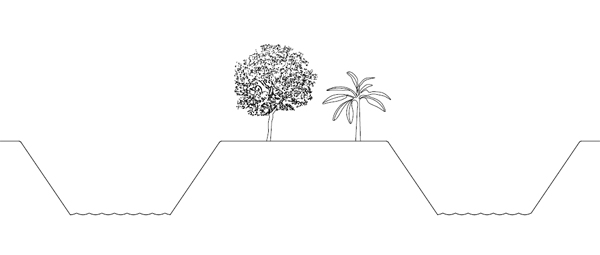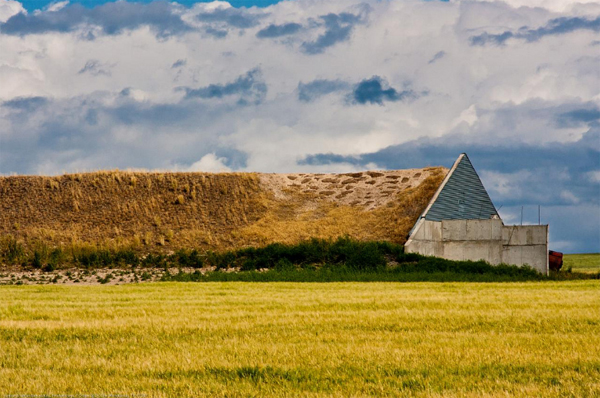“Gasifier uses wood pellets to create flammable mixture that a generator can run on without gasoline. This video shows how it was constructed, how it works, and how to use it from start to finish. Great project for anyone looking for alternative energy or wanting to live off the grid.”
self sufficient
Endless Hot Water Without Electricity
Video demonstrates a “water heater out of used parts and a Stovetec Rocket stove to start the thermo siphoning process.” Obviously you could make your own rocket stove for practically free. You could also use a sawdust stove like we discussed the other day.
Floating Gardens
“Bangladesh faces severe problems as a consequence of storms, cyclones and floods. The ancient practice of floating gardens – beds of straw and water hyacinths on which crops are grown – is making a comeback in the face of increased floods.”
Mixed Agroforestry and Aquaculture

A basic tenet of permaculture is for everything to have more than one use. In the example shown here, instead of having a fish pond separate from an orchard, agroforest or forest garden the two are integrated for increased efficiency. I’m starting to see this type of agricultural practice here and there. I imagine the idea sprang from growing fruit trees next to a lake or pond. If the surrounding land is about 6’-8’ (2m) above the water table, the tree roots can readily reach the water so no irrigation is needed after the first few years. There are lots of possibilities with this basic concept. The ratio of land to fish pond can be changed depending on what you want to produce the most of. The height can be adjusted according to the type of trees. And the overall size and shape can be adjusted to fit your homestead or farm.
Self-reliance in LA
“Erik Knutzen and Kelly Coyne have been farming their yard in Los Angeles for over a decade. In addition to a mini orchard and extensive veggie garden, they have all the instruments of an urban homestead: chickens, bees, rainwater capture, DIY greywater, solar fruit preserver, humanure toilet, rocket stove, adobe oven. But they don’t like to talk about sustainability of self-sufficiency, instead they prefer the term self-reliance.
Potato Storage Cellars

Underground homes and earth-sheltered homes are among the most popular types of alternative homes. Almost everyone knows the earth will moderate the inside temperature and reduce energy costs. That’s why potato storage cellars are common. These structures will “assure the grower that potatoes will be held at the proper temperature from harvest time to shipping time, anywhere from March to May.” Of course, the same principle can be used to build energy efficient homes, storm shelters and rootcellars.
